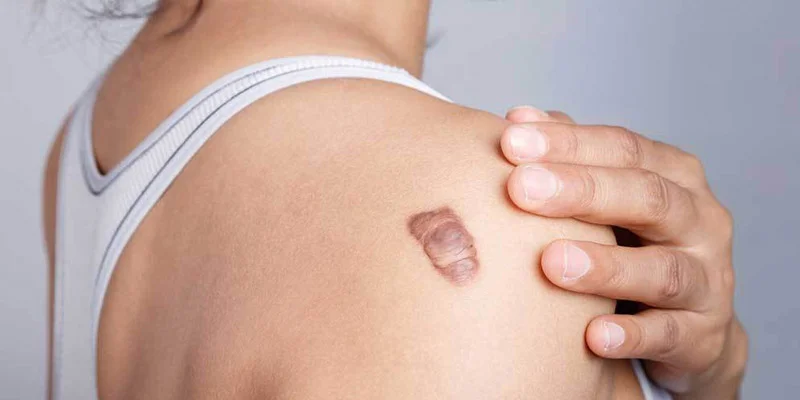
Hypertrophic scars are raised, thickened marks that form when the skin generates too much collagen as it heals. Unlike keloids, which extend beyond the original wound site, hypertrophic scars stay within the boundaries of the injury. These scars typically appear red or pink, and they may cause sensations such as tightness, itching, or discomfort. At Aura Med Spa in Bellaire, TX, we offer customized treatments to reduce the visibility of hypertrophic scars and restore smooth, even skin.
Hypertrophic scars can affect anyone, but certain factors increase the likelihood of developing them. Excess collagen production during the healing process is the main cause of raised, thick scars. Complications in wound healing, such as infection, prolonged inflammation, or tension on the wound, also contribute to scar formation. Trauma from burns, surgeries, or other injuries commonly leads to hypertrophic scars, while a genetic predisposition to abnormal scarring may increase the risk. Understanding these causes helps prevent and manage hypertrophic scars effectively.
Hypertrophic scars present distinct visual and tactile characteristics that help in identifying them:
Recognizing these symptoms is the first step in managing hypertrophic scars and seeking effective treatment.
Understanding the different types of hypertrophic scars can help you better identify your condition and determine the most effective treatment approach. Here are the main types:
Identifying the type of hypertrophic scar is crucial in tailoring the right treatment for improved results.
Hypertrophic scars can develop due to several factors that impact the skin’s healing process:
Recognizing the root causes of hypertrophic scars allows you to implement preventive strategies and pursue the most effective treatment.
Hypertrophic scar treatments focus on reducing scar size, improving texture, and boosting skin elasticity. Topical treatments work by moisturizing and reducing inflammation, while corticosteroid injections help flatten and soften scars. Laser therapies stimulate collagen production and break down blood vessels within the scar, aiding in a smoother appearance. Microneedling promotes healing by creating tiny micro-injuries, encouraging collagen regeneration. In severe cases, surgical revision may be needed to minimize scar visibility. Consistent treatment and aftercare are key to achieving optimal results.
Caring for your skin and taking preventive measures can help minimize the appearance of hypertrophic scars:
Understanding hypertrophic scars and following the right care steps will help you effectively manage and reduce their appearance.


Let’s get in touch!